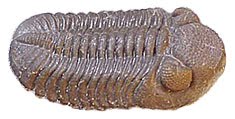By George E. Beetham Jr.
Adventures on Earth column for the December 15, 2010, edition of The Review
The Battle of Gettysburg was among the most studied events of the American Civil War, and what few people realize is that geology played a very important part. In fact, geology was a major factor in the entire campaign leading up to the battle and following the battle.
When Confederate Gen. Robert E. Lee decided to take the war into Pennsylvania that summer of 1863, the first thing he had to do was plan how to get his Army of Northern Virginia on the move toward the Keystone State and avoid the Federal Army of the Potomac, then commanded by Maj. Gen. Joseph Hooker.
Lee decided to move his army into the Shenandoah Valley, away from Culpeper, Va., where the two armies had faced one another following the Battle of Chancellorsville earlier in the year.
Lee moved his army to Sperryville in the eastern shadow of the Blue Ridge, crossing the Blue Ridge into the Valley near Front Royal.
The Blue Ridge is made up of metamorphic rocks of volcanic origin, an old island arc that became part of North America just prior to colliding with Europe and Africa to form the ancient supercontinent, Pangea.
The rocks of the Blue Ridge include some granite, Catoctin greenstone (a metamorphosed lava), and an outlying ridge composed largely of Cambrian quartzite. All of these rocks are very hard and resistant to erosion, which is why they form ridges.
Once in the Shenandoah Valley, Lee sent cavalry to control the gaps that the Federals might have sent to locate him. Thus obscured from the prying eyes of the Federals, Lee moved north into Pennsylvania.
From Chambersburg, located in the Cumberland Valley of Pennsylvania (both valleys are part of the Great Valley that runs along the Appalachians), Lee sent one division north and east toward Harrisburg. He sent another element east across South Mountain toward York and the Susquehanna River.
Meanwhile, Lincoln replaced Hooker with Maj. Gen. George G. Meade. Meade hurried his army northward to locate Lee.
The town of Gettysburg was the hub of roads that radiated in all directions of the compass. It was there that Federal Cavalry located Lee and began the battle.
On the first day, July 1, 1863, the two armies formed along north-south ridges west of town. Holding the high ground was a defensive move, allowing an army to fire down on attackers.
As more units arrived, the battle lines stretched around the north side of the town. By evening, the Confederates had pushed the Federals south of town, where they took up positions along Cemetery Ridge and Culp’s Hill.
The battle line resembled an inverted fish hook, leaving the Federals in control of roads leading to Baltimore and Washington.
It was along these lines that the battle played out on the second and third days.
Gettysburg is located in what is known as the Triassic Basin. No longer a basin, the geologic formation was formed as sediments washed into an old rift valley that formed as Pangea began to break apart.
The red shales and sandstones of the basin hardened and fractured. In time an upwelling of magma extruded up along the fractures in the rock, forming a hard, resistant rock known as diabase.
As the softer red shale and sandstone eroded, it left the diabase beds as ridges. All of the ridges around Gettysburg were formed this way. The Federals occupied the higher of the ridges, dominating the area from Cemetery Ridge on the Federal line to Seminary Ridge on the Confederate line.
After the battle, Lee withdrew his wagon trains through gaps in South Mountain, screening the Army of the Potomac to the east.
While geology was a factor in the campaign, it was by no means decisive. But the Federals did make good use of the terrain they found, and that made all the difference.

No comments:
Post a Comment